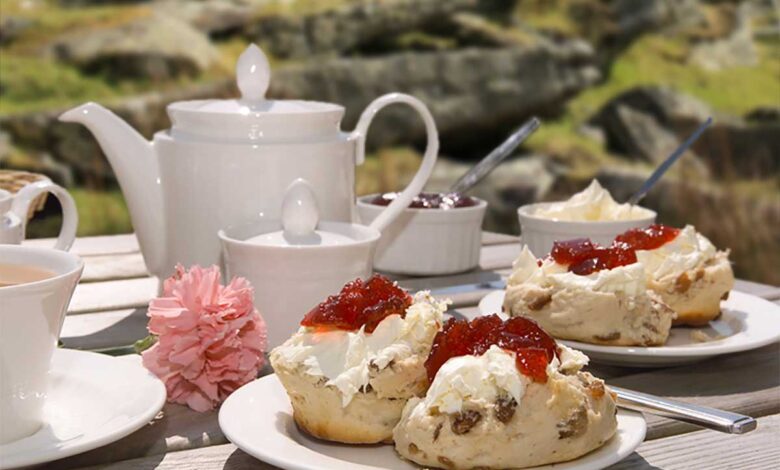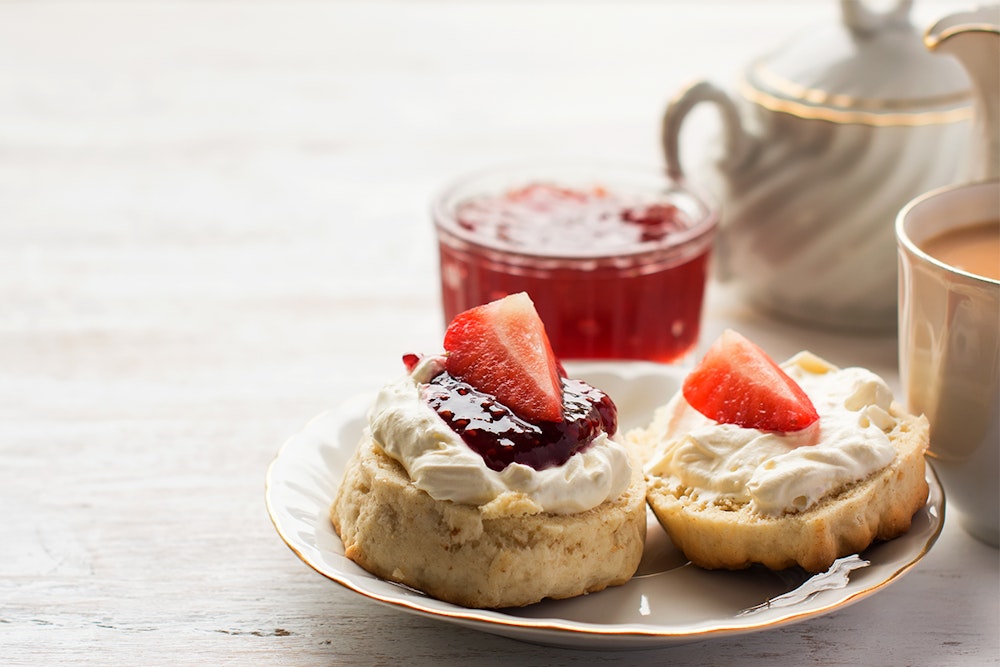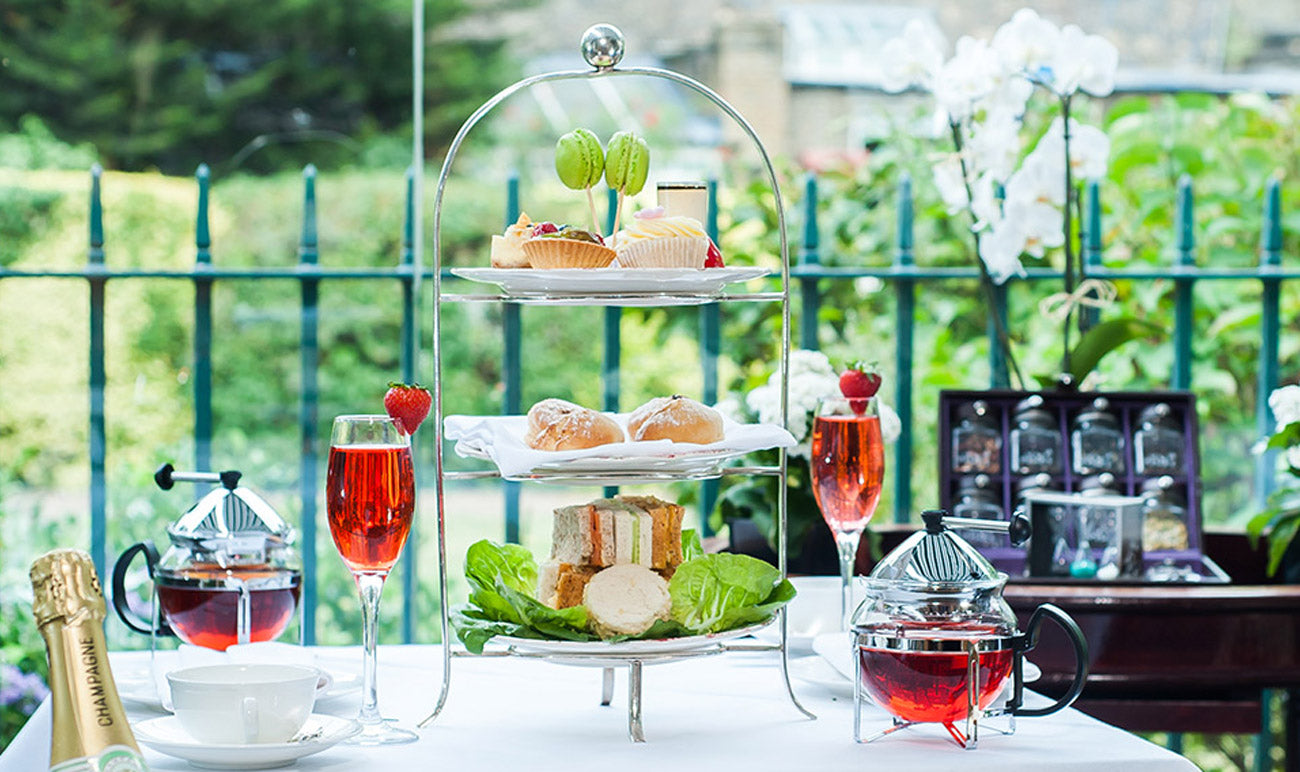The Delightful Tradition of Cream Tea: A British Classic

Cream tea is a beloved British tradition that combines the simple pleasures of tea, scones, jam, and clotted cream. Originating from the southwestern counties of England, particularly Devon and Cornwall, this delightful afternoon treat has become a symbol of British hospitality and culinary heritage.
Unlike a full afternoon tea, which includes sandwiches and pastries, cream tea focuses solely on freshly baked scones served with rich clotted cream and fruity jam. The debate over whether to spread the cream or jam first has sparked friendly rivalries between Devon and Cornwall, adding a layer of cultural charm to this indulgent experience.
The History of Cream Tea
The origins of cream tea can be traced back to the 11th century when Tavistock Abbey in Devon was rebuilt after a Viking raid. Local workers were served bread with clotted cream and strawberry preserves as a reward for their labor. This simple yet satisfying combination quickly gained popularity and became a staple in tearooms across the region.
By the 19th century, cream tea had become an established part of British culture, especially in the countryside. The rise of railway travel allowed more people to visit Devon and Cornwall, where they could enjoy this delicacy in quaint tea houses. Today, cream tea remains a cherished tradition, often enjoyed during afternoon breaks or as part of a leisurely weekend treat.
The Essential Components of Cream Tea

1. The Perfect Scone
A proper cream tea begins with a freshly baked scone. Traditional British scones are lightly sweetened, with a soft, crumbly texture. They should be served warm, ideally straight from the oven, to enhance their buttery flavor.
The best scones are made with simple ingredients: flour, butter, sugar, milk, and a pinch of baking powder. Some variations include raisins or currants for added sweetness. The key is to avoid overworking the dough, as this can make the scones tough rather than light and fluffy.
2. Clotted Cream: The Star of the Show
Clotted cream is a thick, velvety dairy product with a high fat content, giving it a luxurious texture. It is made by slowly heating full-fat cow’s milk until a crust forms on top, which is then skimmed off and cooled.
This indulgent cream is the highlight of any cream tea, offering a rich, slightly nutty flavor that pairs perfectly with sweet jam. Authentic clotted cream comes from Devon and Cornwall, where the dairy farming tradition ensures its superior quality.
3. Fruit Jam: A Sweet Complement
No cream tea is complete without a generous dollop of fruit jam. Strawberry jam is the classic choice, but raspberry, blackberry, or even apricot preserves can also be used. The jam should be thick and fruity, providing a contrast to the creamy richness of the clotted cream.
Homemade jam is often preferred for its fresh, vibrant taste, but high-quality store-bought varieties can also work well. The key is to use a jam that isn’t overly sweet, allowing the natural fruit flavors to shine.
4. A Proper Cup of Tea
A well-brewed pot of tea is the ideal accompaniment to this. Black teas such as Earl Grey, English Breakfast, or Darjeeling are traditional choices, offering a robust flavor that balances the sweetness of the scones and jam.
The tea should be served hot, with milk and sugar offered on the side. Some prefer a lighter herbal tea, but the classic pairing remains a strong, aromatic black tea that enhances the overall experience.
The Great Cream Tea Debate: Jam or Cream First?
One of the most hotly contested aspects of this is the order in which the jam and cream should be applied to the scone. In Devon, the custom is to spread the clotted cream first, followed by the jam. This method allows the cream to act as a buttery base, holding the jam in place.
In Cornwall, however, the opposite approach is taken—jam is spread first, with cream dolloped on top. Cornish enthusiasts argue that this allows the cream to stand out as the crowning glory of the scone. While both methods are delicious, the debate adds a playful element to the cream tea tradition.
How to Host the Perfect Cream Tea at Home

1. Baking the Scones
To make authentic it scones, start by preheating your oven to 220°C (425°F). Mix the dry ingredients, rub in cold butter, then gradually add milk to form a soft dough. Roll it out, cut into rounds, and bake for 10-12 minutes until golden.
2. Preparing the Clotted Cream and Jam
If you can’t find clotted cream in stores, you can make a simplified version by whipping heavy cream until thick. For the jam, choose a high-quality fruit preserve or make your own by simmering berries with sugar and lemon juice.
3. Serving with Elegance
Arrange the warm scones on a tiered stand, with small bowls of clotted cream and jam. Serve alongside a freshly brewed pot of tea in delicate china cups for an authentic touch.
FAQs About Cream Tea
1. What is the difference between cream tea and afternoon tea?
Cream tea consists of scones, clotted cream, jam, and tea, while afternoon tea includes additional items like finger sandwiches, cakes, and pastries.
2. Can I use whipped cream instead of clotted cream?
While whipped cream is lighter, clotted cream has a richer, thicker texture that is essential for an authentic cream tea experience.
3. Is cream tea served at a specific time of day?
Traditionally, cream tea is enjoyed in the afternoon, but it can be served anytime as a sweet treat.
4. What type of tea pairs best with cream tea?
Strong black teas like Earl Grey or English Breakfast complement the sweetness of the scones and jam perfectly.
5. Why is there a debate over jam or cream first?
The order varies between Devon (cream first) and Cornwall (jam first), reflecting regional preferences and traditions.
Conclusion: Why Cream Tea Remains Timeless
This is more than just a snack—it’s a celebration of British tradition, craftsmanship, and the joy of slowing down to savor life’s simple pleasures. Whether enjoyed in a cozy tearoom or at home with friends, this classic treat continues to bring people together in the most delightful way.

